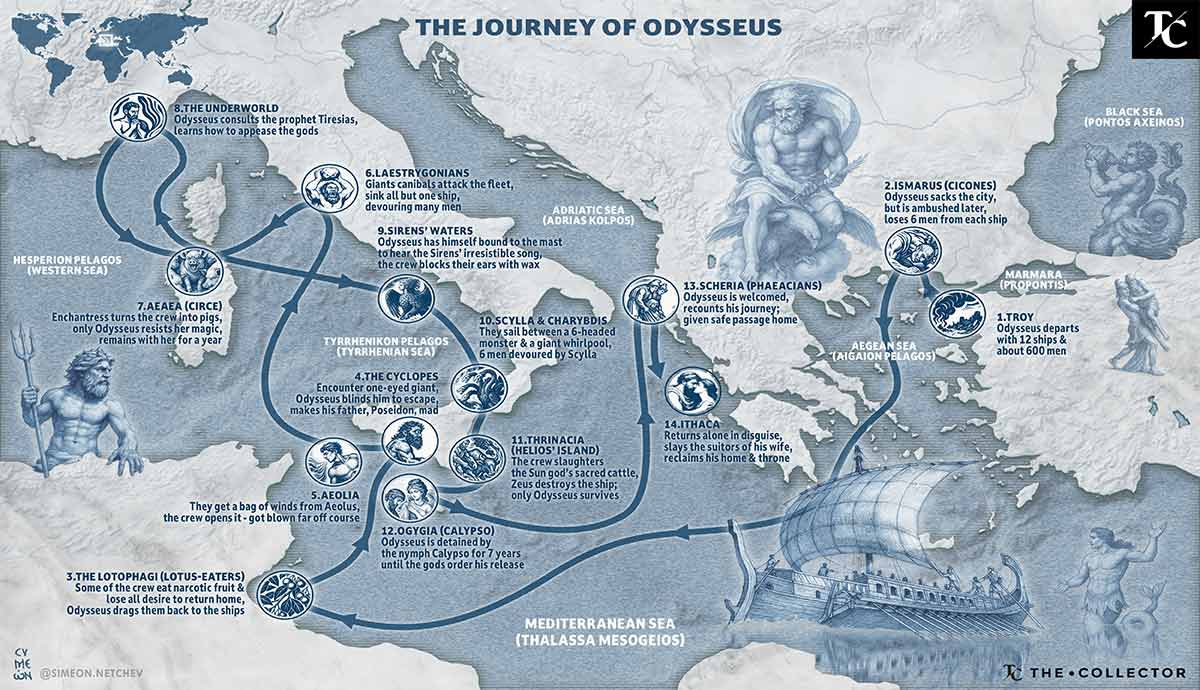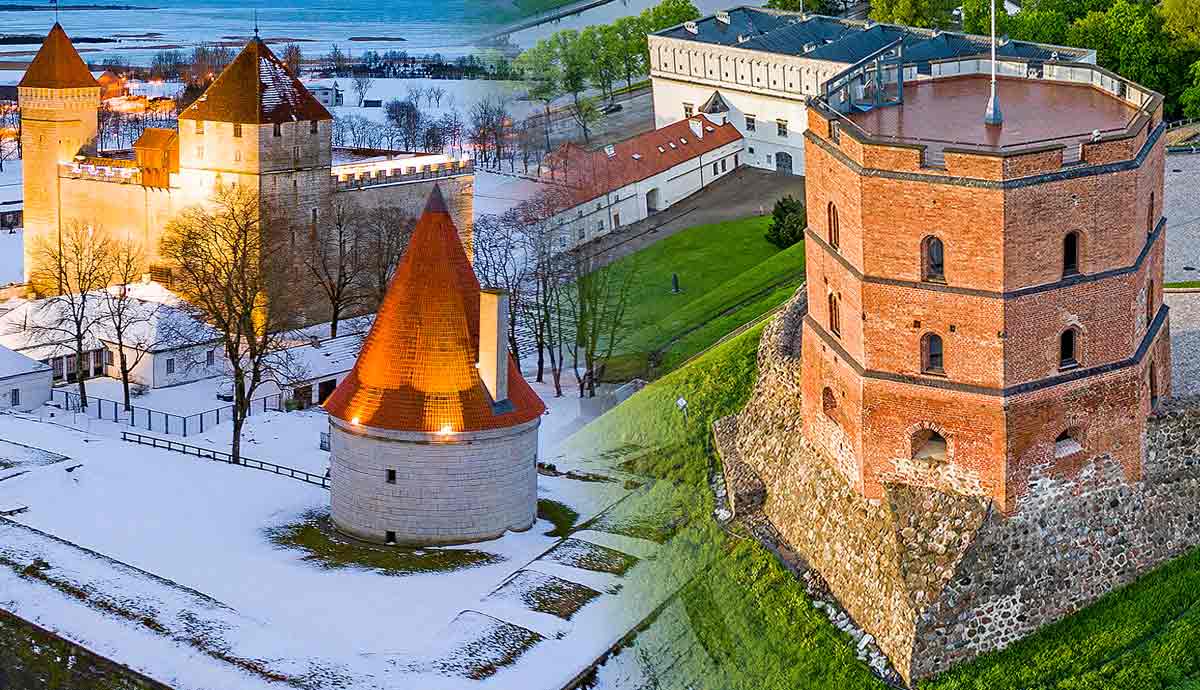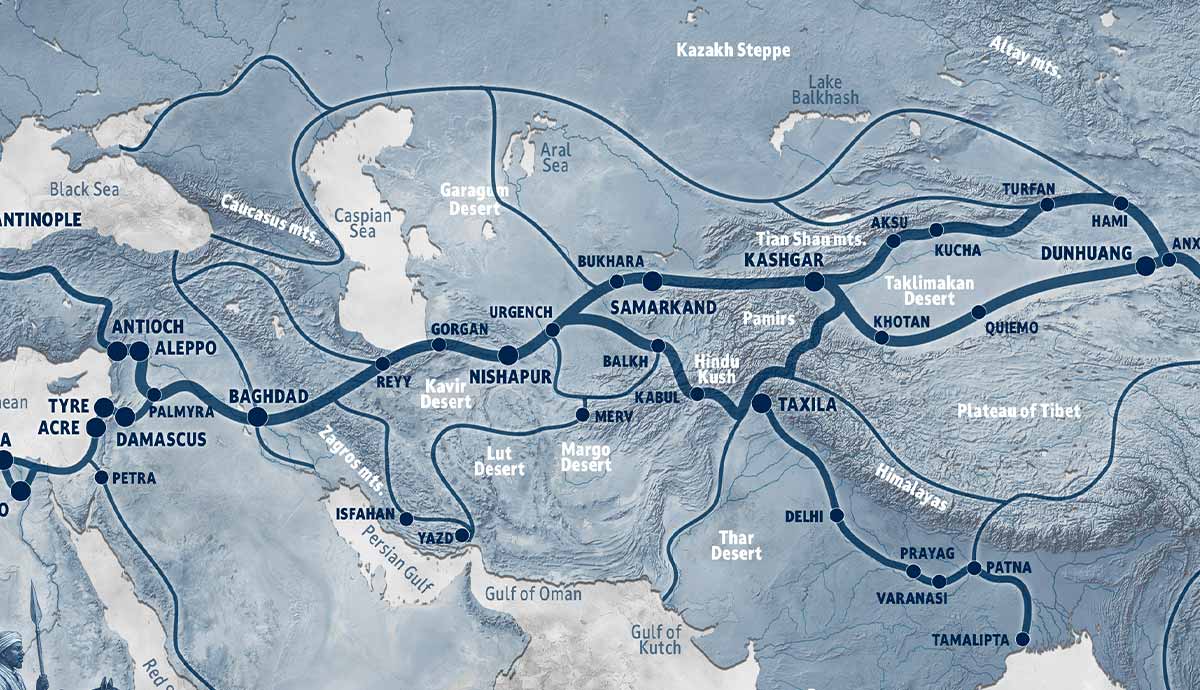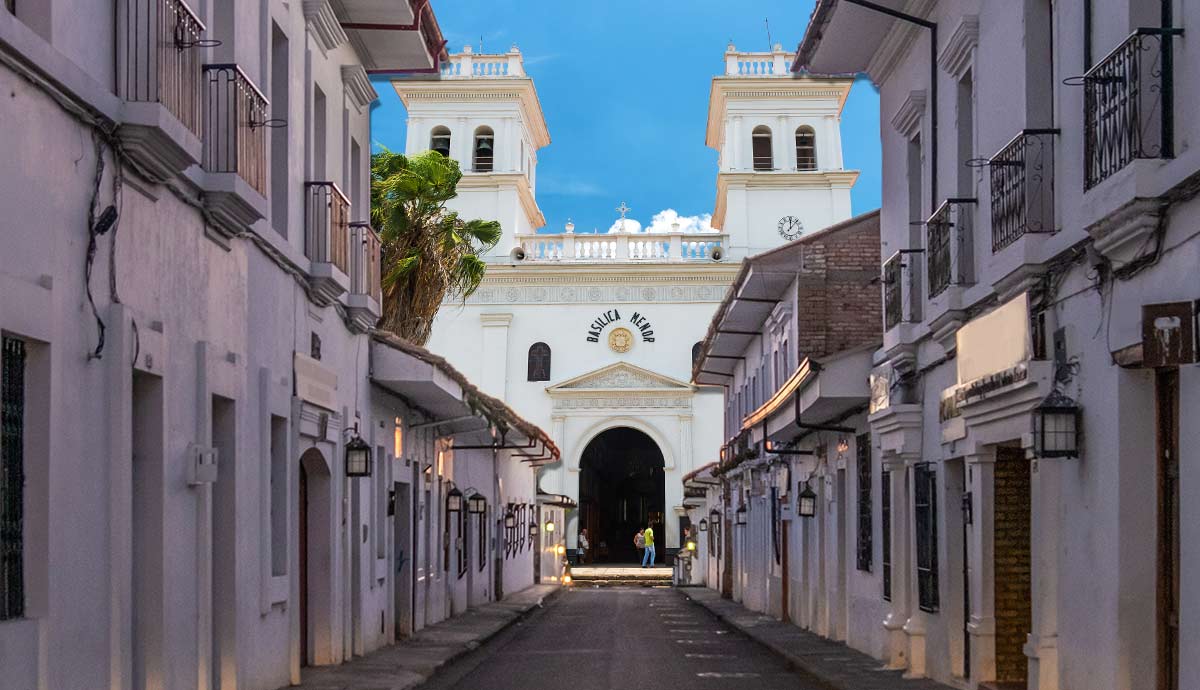
Christopher Nolan’s upcoming film, “The Odyssey,” slated for release on July 17, 2026, is a cinematic adaptation of Homer’s ancient Greek epic poem. The narrative follows Odysseus, portrayed by Matt Damon, on his arduous journey home following the Trojan War, encountering mythical creatures and divine challenges.
The ensemble cast includes Tom Holland, Anne Hathaway, Zendaya, Robert Pattinson, Lupita Nyong’o, and Charlize Theron. Filming is set to commence this month, with locations spanning the United Kingdom, Morocco, and various sites throughout Italy, particularly the Aeolian Islands in Sicily. Nolan plans to utilize new IMAX film technology to bring this epic tale to the big screen. In anticipation of the film, here are ten significant locations from “The Odyssey,” along with their mythological significance and possible real-world counterparts.
1. Ithaca (Mythical) – Ithaca, Greece (Real Life)

In Homer’s epic, Ithaca is the homeland of Odysseus, symbolizing his ultimate destination and the enduring theme of homecoming. The island is depicted as rugged and modest, yet deeply cherished by its inhabitants.
The modern-day Ithaca, part of Greece’s Ionian Islands, is traditionally identified as the same Ithaca from the epic. Inhabited since the Mycenaean period (1600–1100 BCE), the island offers archaeological sites such as the School of Homer, believed to be linked to Odysseus’s palace. Visitors can explore the Cave of the Nymphs, where Odysseus is said to have hidden treasures, and hike Mount Neriton for panoramic views. Ithaca’s rich history and serene landscapes make it a compelling destination for both literary enthusiasts and history aficionados.
2. Troy (Mythical) – Hisarlik, Turkey (Real Life)

Troy is the city where the Trojan War took place, marking the starting point of Odysseus’s journey. Historically, Troy is believed to be located in present-day Hisarlik, Turkey.
The real Troy is widely believed to be located at Hisarlik in modern-day Turkey. Excavations have revealed multiple layers of ancient cities, dating as far back as 3000 BCE. Troy VI and Troy VII, dating to the Bronze Age, are considered the most likely candidates for Homeric Troy. Visitors can walk through the ruins, including the massive city walls and remnants of ancient houses. The nearby Troy Museum provides an in-depth look at artifacts from the city. It offers insights into its history and connection to Homer’s tales.
3. Ismaros (Mythical) – Maroneia, Greece (Real Life)

After leaving Troy, Odysseus and his crew raid Ismaros, the city of the Cicones. Though they initially succeed, the Cicones retaliate, killing many of Odysseus’s men. This early setback foreshadows the struggles that will plague his journey home.
Ismaros is believed to correspond to the ancient city of Maroneia, located in modern Greece’s Thrace region. Founded in the 7th century BCE, Maroneia was a significant trade center in antiquity. It was famous for its wine, which Odysseus used to intoxicate the Cyclops Polyphemus later in his journey. Today, visitors can explore the ruins of an ancient theater, an acropolis, and remnants of the city walls. The nearby Mount Ismaros offers spectacular views of the Aegean Sea, and the region’s vineyards continue to produce excellent wines, just as they did in Homer’s time.
4. Land of the Lotus-Eaters (Mythical) – Djerba, Tunisia (Real Life)

Odysseus’s men land in a strange place where the inhabitants eat the intoxicating lotus fruit, making them forget their desire to return home. Odysseus is forced to drag his men away before they succumb to the island’s pleasures.
Many scholars associate this land with the island of Djerba in Tunisia. Djerba has been inhabited since antiquity, with evidence of Phoenician, Roman, and Berber settlements. Today, it is known for its white-sand beaches, traditional markets, and historic synagogues, such as El Ghriba, which dates back over 2,500 years. Visitors can also explore ancient forts and the island’s distinct architecture, which preserves the cultural blend of its rich history.
5. Island of the Cyclopes (Mythical) – Sicily, Italy (Real Life)

This island is home to the one-eyed giant Polyphemus, whom Odysseus blinds in a daring escape. It is one of the most famous episodes of The Odyssey.
Sicily, particularly the area around Mount Etna, is often linked to this legend. The Aeolian Islands nearby are filled with caves and rugged coastlines fitting the description of the Cyclopes’ land. Visitors can explore the Grotta di Polifemo, a cave that locals associate with the myth. Sicily itself has a rich history, from Greek settlements to Norman influences, with sites like the Valley of the Temples in Agrigento offering incredible ancient ruins.
6. Aeolia (Mythical) – Aeolian Islands, Italy (Real Life)

Aeolus, the god of the winds, gifts Odysseus a bag containing all the winds except the one that will take him home. Unfortunately, his crew opens it, sending them off course.
The Aeolian Islands, north of Sicily, are believed to be Aeolia. These volcanic islands have been inhabited since prehistoric times and were an important center of trade in antiquity. Today, they are a UNESCO World Heritage Site, with stunning landscapes, hot springs, and historic sites such as the ruins of Lipari Castle. The island of Stromboli, with its active volcano, mirrors the fiery temperament of Aeolus’s domain. Visitors can hike the volcanic craters, take boat tours around the islands, or explore the black-sand beaches of Vulcano.
7. Telepylos (Mythical) – Formia, Italy (Real Life)

Telepylos, the land of the Laestrygonians, is one of the most perilous stops on Odysseus’s journey. These giant cannibals destroy almost his entire fleet by hurling boulders at the anchored ships, leaving only his own vessel intact. The high-walled harbor described in The Odyssey suggests an enclosed bay or fjord-like setting.
Many scholars associate Telepylos with Formia, a coastal town in Italy with a rich maritime history. Located between Rome and Naples, Formia has been inhabited since at least the Roman period, serving as an important trade hub along the ancient Appian Way. Visitors can explore the Tomb of Cicero, an impressive mausoleum believed to belong to the famous Roman statesman. The region also boasts ancient aqueducts, Roman villas, and the picturesque coastline of Gaeta, which resembles the cliffs and narrow harbor described in Homer’s text.
8. Aeaea (Mythical) – Ponza, Italy (Real Life)

Aeaea is the island of the sorceress Circe, where Odysseus and his crew stay for a year. Circe is initially hostile, turning Odysseus’s men into swine, but she later becomes an ally and lover to Odysseus, helping him navigate the challenges ahead. Aeaea is described as an enchanting island with lush forests and grand halls.
Ponza, an island off Italy’s west coast, is widely believed to be Aeaea. Known for its rugged cliffs, sea caves, and turquoise waters, Ponza has been inhabited since ancient times. The Romans built an extensive tunnel system here, some of which can still be explored today. The Grotte di Pilato, a series of sea caves, is linked to legends of Circe and was likely used for fish farming in Roman times. Ponza’s unspoiled landscapes, small fishing villages, and historical ruins make it a captivating destination.
9. Ogygia (Mythical) – Gozo, Malta (Real Life)

Ogygia is the secluded island where the nymph Calypso keeps Odysseus captive for seven years, offering him immortality if he stays with her. Ultimately, the gods intervene, forcing Calypso to release him so he can continue his journey home.
Gozo, the second-largest island in Malta, is often linked to Ogygia. The island has been inhabited since Neolithic times, with the Ġgantija temples dating back to 3600 BCE, one of the world’s oldest free-standing structures. Calypso’s Cave, overlooking the red sands of Ramla Bay, is a popular site believed to be where Odysseus was held. The island’s history includes Phoenician, Roman, and Arab influences, seen in its medieval citadel and Baroque churches. Visitors can explore the Azure Window’s remnants, the Blue Hole diving site, and charming villages with traditional Maltese architecture.
10. Scheria (Mythical) – Corfu, Greece (Real Life)

Scheria is the final stop before Ithaca, where Odysseus is welcomed by the Phaeacians, a civilized and seafaring people. They provide him with a ship to return home, marking the end of his long odyssey.
Corfu, one of Greece’s most picturesque islands, is widely associated with Scheria. Its lush landscapes and coastal beauty align with Homer’s descriptions. Corfu has a history dating back to ancient Greece, having been settled by the Corinthians in the 8th century BCE. The island has been influenced by Venetian, French, and British rule, reflected in its stunning Old Town, a UNESCO World Heritage Site. Visitors can explore the Achilleion Palace, built for Empress Elisabeth of Austria, or the 16th-century New Fortress.











